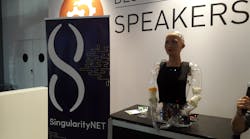Cryptocurrency is the marriage between cryptography and digital currency. Rather than being processed by central banks, transactions are encrypted and made directly between traders. These transactions are recorded in a public ledger where they can be viewed by anyone, enabling any issues to be reported.
Enabled by Blockchain software, cryptocurrency is not attached to banks for foreign currency, making it immune to inflation. The fixed quantity of cryptocurrencies like bitcoin eliminate the ability to print more. Like gold, it is a commodity with a value that is contingent on the miner’s activity in buying and selling it. This could make it immune to problems that the Euro saw in 2010 with Greece’s debt crisis, since its value is not dependent on the value of global currencies like the U.S. dollar or Euro.
But despite being immune to inflation, one of cryptocurrency’s weaknesses is stability. In 2009 Bitcoin was the first, and still the most widely known, cryptocurrency. Not even 10 years later, more than 900 similar currencies can be found on the internet, and their popularity often determines their validity as currency. Also, the value of these currencies seems to be in a constant flux. Today, one Bitcoin is sold at over $15,000 U.S., but it is a risky business—the risk of this bubble bursting is quite real.
As a crypto-economy grows ,it seems to fly in the face of government regulation and well-established practices. This probably means there is still a long way to go, and much government impedance to its adoption. Many in the crypto-economy believe this technology is growing organically and is inevitable; it’s just a matter of time.
How is Crypto-technology Being Used?
During this year’s IoT Solution World Congress in October, Blockchain companies were presenting new cryptocurrencies and the capabilities of new Blockchain companies. These companies are finding other ways to use this decentralized, all inclusive, and secure technology to expand into hacking, investing, the building of communities, and more.
Blockchain can also be found in gaming: Playkey is a Blockchain-powered peer-to-peer cloud gaming platform that enables gamers worldwide to instantly play top-rated games. No downloads or installations are necessary, and an initial coin offering will unite and incentivize Playkey subscribers and miners thorough a tokenization system.
Today, 70% of those playing Steam, a multiplier platform developed by Valve Corporation, are unable to play top games, while 30% cannot even run the games from their legacy PCs. Playkey uses Blockchain to keep subscribers up to date with the most recent developments in cloud gaming.
Professional gaming is similarly growing, as evidenced by companies like Lordmancer II. This is the first mass multiplayer online role playing game on mobile to offer earning cryptocurrency with ever-increasing value while playing.
Lordmancer II encourages players to farm valuable weapons and artifacts, or “cultivate” characters to sell them to other players. This earns players Lord Coins Tokens. Players can then sell their tokens for other crypto or fiat at a crypto-exchange.
Blockchain is also adopted in robotics and AI. Some comments overhead at the IoT Solution World Congress brought to mind the dot-com boom of the late-’90s and early-2000s. However, one company that was able to manifest what all this Blockchain stuff was about better than most was SingularityNET. Its humanoid robot Sophia is one of the most advanced computers in the world, and uses Blockchain to process massive amounts of data into a seemingly simple conversation. SingularityNET presented Sophia as a tangible representation of an online platform at the intersection of Blockchain and AI.
Ultimately, Blockchain may help us get one step closer to becoming one with the digital world, and cryptocurrency might be the first live experiment.

